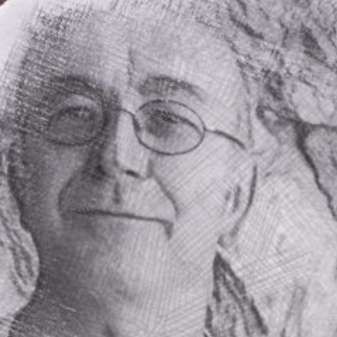Edinburgh’s 1869 church of St George’s West is a fine example of the prolific output of local architect David Bryce (1803–76). On this particularly chilly evening (inside and out), it hosted an Edinburgh Quartet “Rush Hour Concert” which featured an interesting take on format and programming.
The main meat of the evening, around which other items were programmed, was Shostakovich’s String Quartet no. 8 in C minor. Written in only three days of July 1960 while visiting the rubble of post-war Dresden, the work is built on DSCH, the German nomenclature for the notes D, E flat, C, B. This musical cypher for D. SCHostakovich provides not only the noticeably angular lines which aid perceivable counterpoint, but also thematic unity across the work’s five barely separated movements, three of which are marked Largo.
The audience had been primed by readings from two sources: Testimony: The Memoirs of Dmitri Shostakovich as related to and edited by Solomon Volkov (1979) and Ian MacIntosh’s The New Shostakovich (1990). The readings were given by Christopher Hartley and Roger Williams, the latter also having provided excellent programme notes. How was this helpful? In the extract from Testimony, Shostakovich declares himself a lover of all folk musics, but above all of Jewish folk music. He opines that the effect of centuries of persecution is encoded in even the most boisterous dance music and refers to the necessity for music to operate on two levels. An awareness of this double-edged aesthetic enhances appreciation of Shostakovich in general, and this quartet in particular.
Mark Bailey’s lone cello entry was soon followed by contrapuntal entries from other members, and the emotional terrain of the piece quickly and convincingly unfolded. Balance, ensemble and phrasing were excellent. Soon, leader Tristan Gurney, supported by pulse-less, sustained chords from the others, embarked on the searching, chromatic passage which yielded to a darkly serene melody of the double-edged nature mentioned earlier. A thrillingly executed passage of frenetic counterpoint on the DSCH theme led us to the demonic waltz based on Jewish folk song. It would be tempting for a quartet to match the desolation of the final movements with bleak tone-colour. However, there is much sombre beauty in these moments, which was well served by the Edinburgh Quartet’s lovely sound. This was simply one of many features in an excellent account which really got to the heart of this work.
The quantity of Shostakovich’s quartet output is all the more remarkable given the relatively unpopulated preceding history of the genre in Russia. However, there are some fine examples, as Tristan Gurney explained when introducing a Sarabande by Felix Blumenfeld (1863–1931). This piece was one of a set written for a series of chamber music reunions known as “Les Vendredis”. Hosted by music publisher Mitrofan Belyayev, such evenings aired works by such members as Glazunov and Rimsky Korsakov. This neo-classical movement from Blumfeld’s Op. 26, his only string quartet, was instantly appealing. The contrapuntal part-writing was elegantly phrased here and the warm sound belied the chilly surroundings.
My personal experience of musical haunting tends to occur on the road less travelled. I’ve known and loved Shostakovich’s Eighth Quartet for many years. What was new to me in this programme was Schnittke’s Preludium in Memorium D. Shostakovich, and I’ve sought out this work several times since hearing it.
The work is for two violins, yet Tristan Gurney stood alone before two music stands; there seemed to be two lines to his part, left-hand pizzicato notes underpinning a yearning, bowed upper part. Was he planning to play the entire work alone? It seemed so until, some way into this five-minute piece, Gordon Bragg’s second violin emerged from above and behind us in the gallery. Timing and ensemble here were impressive as the players must have been ten diagonal metres apart.
However, aside from intriguing performance practices, what was it about this piece which grabbed me? Resonantly, it was the same double-edged aesthetic which informed the Shostakovich. Despite the calm tempo, there were moments of such violent pizzicato that I couldn’t help wondering if Gurney’s violin would still have four strings – or indeed any – by the end of the piece. In the solo opening, there are passages of strained beauty reminiscent of unaccompanied Bach. In fact, unless I’m mistaken, in a touch of programming genius, this movement felt like an eerie sarabande. Built on the DSCH theme, with the repeated D seeming to occupy the role of a “dominant pedal”, the key of G soon seemed to emerge. No sooner had we landed there than the piece subsided into G minor and an ambivalent oscillation obtained throughout this gripping elegy. I would thoroughly recommend this piece – along with the others in this engaging programme and the Edinburgh Quartet.


